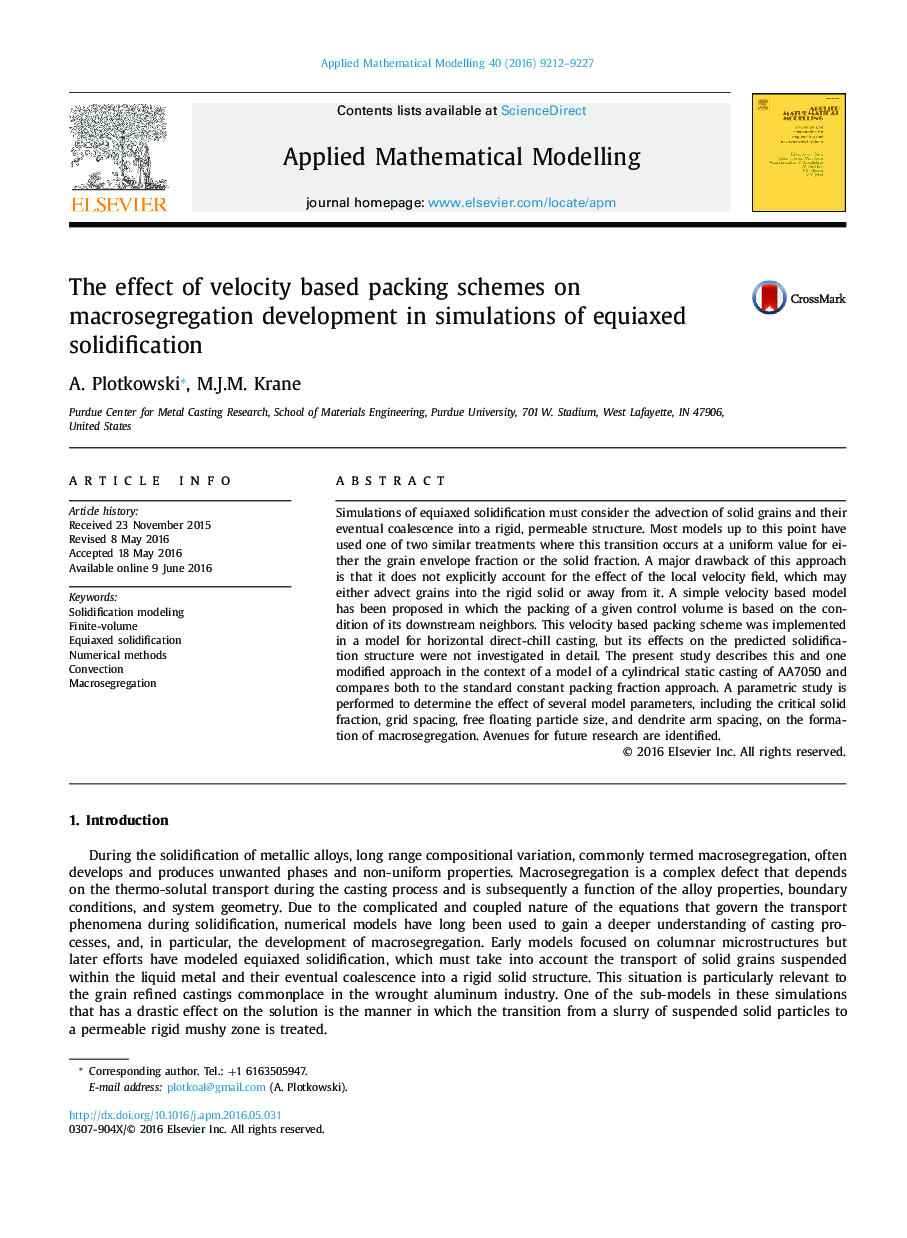| Article ID | Journal | Published Year | Pages | File Type |
|---|---|---|---|---|
| 5471468 | Applied Mathematical Modelling | 2016 | 16 Pages |
Abstract
Simulations of equiaxed solidification must consider the advection of solid grains and their eventual coalescence into a rigid, permeable structure. Most models up to this point have used one of two similar treatments where this transition occurs at a uniform value for either the grain envelope fraction or the solid fraction. A major drawback of this approach is that it does not explicitly account for the effect of the local velocity field, which may either advect grains into the rigid solid or away from it. A simple velocity based model has been proposed in which the packing of a given control volume is based on the condition of its downstream neighbors. This velocity based packing scheme was implemented in a model for horizontal direct-chill casting, but its effects on the predicted solidification structure were not investigated in detail. The present study describes this and one modified approach in the context of a model of a cylindrical static casting of AA7050 and compares both to the standard constant packing fraction approach. A parametric study is performed to determine the effect of several model parameters, including the critical solid fraction, grid spacing, free floating particle size, and dendrite arm spacing, on the formation of macrosegregation. Avenues for future research are identified.
Keywords
Related Topics
Physical Sciences and Engineering
Engineering
Computational Mechanics
Authors
A. Plotkowski, M.J.M. Krane,
